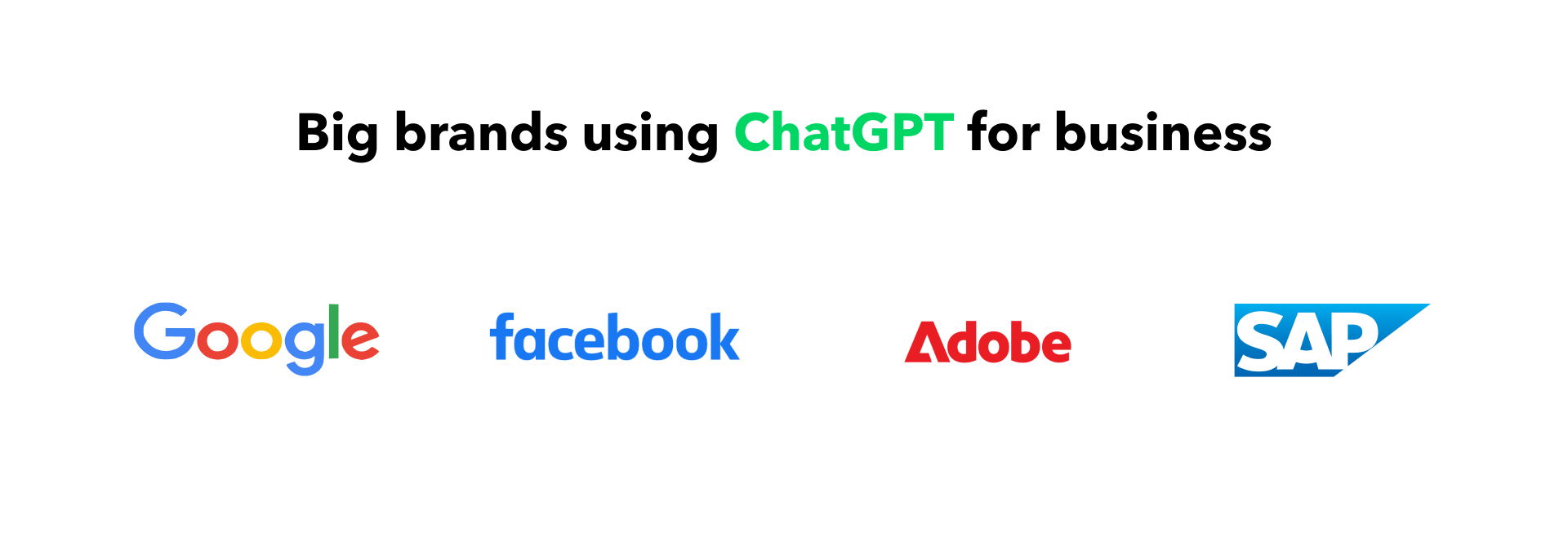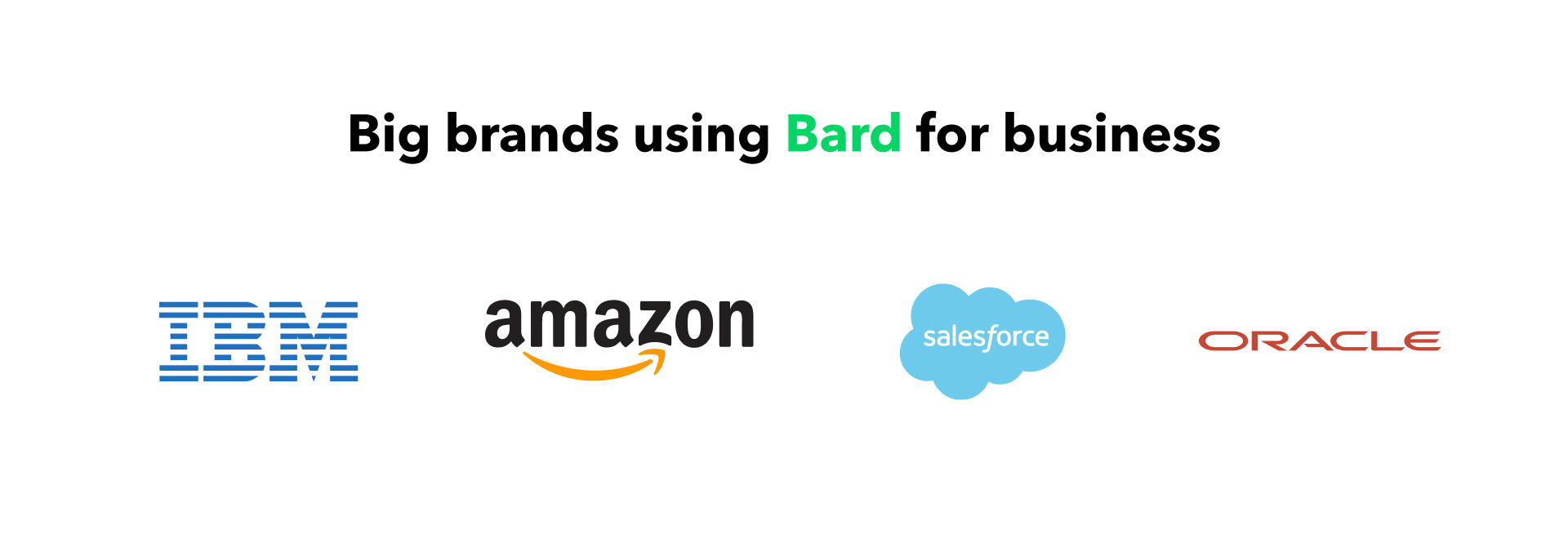In the ever-evolving world of artificial intelligence, two prominent chatbot tools have emerged, captivating users with their remarkable abilities to simulate human-like conversations: Google Bard and OpenAI's ChatGPT.
These AI-powered marvels harness the power of natural language processing and machine learning to revolutionize how we interact with technology.
While Bard, developed by Google, emerges as a creative and helpful collaborator, supercharging imagination and boosting productivity, ChatGPT, born from the labs of OpenAI, presents itself as a versatile natural language processing tool that can assist with a myriad of tasks, ranging from answering questions to composing emails, essays, and even code.
As we dive into AI-driven conversation, let us explore the features, capabilities, and distinctive qualities that set Bard and ChatGPT apart and examine how these innovative chatbots have redefined the boundaries of human-machine interaction.
What is ChatGPT?
ChatGPT is an artificial intelligence chatbot developed by OpenAI. It is driven by AI technology and utilizes natural language processing to enable human-like conversations and perform various tasks.
ChatGPT can answer questions, assist with tasks such as composing emails, essays, and code, and engage in conversational dialogue.
It is designed to provide users with a versatile natural language processing tool that can understand and respond to queries and prompts in a manner that closely resembles human conversation.
With its ability to understand and generate human-like text, ChatGPT aims to provide users with a sophisticated and interactive conversational experience. They rolled out GPT-3 first, and their latest premium platform works on GPT-4.
Features of ChatGPT
ChatGPT possesses a multitude of features that enhance the human potential in various domains. Let's explore the diverse capabilities of ChatGPT and how they can positively impact industries and individuals alike.
1. Generate written code with ease
ChatGPT goes beyond being a language model—it excels at generating written code effortlessly. By leveraging its deep understanding of programming languages and algorithms, ChatGPT becomes a valuable companion for developers.
It provides code snippets, assists in debugging software issues, and can even develop complete code based on given requirements. Whether Python, JavaScript, or any other language, ChatGPT empowers developers to write code efficiently and effectively.
2. Craft compelling product descriptions
Engaging in product descriptions is essential for attracting customers and driving sales. ChatGPT specializes in compelling text that effectively showcases a product's features, benefits, and unique selling points. Leveraging ChatGPT's ability to generate persuasive content, businesses and e-commerce platforms can captivate their target audience, ultimately increasing conversion rates and boosting their bottom line.
3. Streamline blog post creation
Crafting well-written and informative blog posts can be time-consuming and challenging. ChatGPT can generate high-quality articles on a wide range of topics, providing bloggers and content creators with a reliable tool for streamlining their content creation process. With ChatGPT's assistance, bloggers can ensure their posts have a coherent structure, contain relevant information, and engage readers with an appealing writing style.
4. Enhance email composition
Composing effective and impactful emails requires striking the right tone and conveying the intended message. ChatGPT comes to the rescue by offering assistance in composing email drafts. Whether it's a professional email, a simple message, or even a marketing campaign email, ChatGPT can generate suggested content to help users refine their drafts. This saves time and ensures that each email makes the desired impact, leading to more successful communication.
5. Summarize transcripts, meetings, and podcasts effectively
Lengthy transcripts, meeting recordings, or podcast episodes can be overwhelming. However, ChatGPT provides a valuable solution by summarizing the content. By condensing complex conversations into key points and essential details, ChatGPT simplifies information retrieval. Users can quickly grasp crucial information, allowing for better comprehension and efficient knowledge acquisition.
6. Simplify complex topics with clear explanations
Understanding complex concepts is a challenge that many individuals face. ChatGPT excels in breaking down intricate issues into simpler explanations.
Whether it's learners, students, or anyone seeking a better understanding of complex subjects, ChatGPT provides precise and understandable explanations. By leveraging ChatGPT's capabilities, individuals can confidently delve into intricate topics, fostering a more accessible and enriching learning experience.
7. Generate law briefs and legal summaries
Legal professionals often require concise and accurate overviews of legal cases, statutes, and arguments. ChatGPT can generate law briefs and legal summaries, assisting lawyers, researchers, and law students in their work. With ChatGPT's ability to analyze vast amounts of legal information, legal professionals can save time and enhance their efficiency when conducting legal research, preparing case analysis, or organizing legal arguments.
8. Facilitate effective language translation
In an interconnected world, language barriers can hinder effective communication and collaboration. ChatGPT bridges this gap by offering proficiency in translation tasks. Whether it's translating text from one language to another or helping individuals communicate across language barriers, ChatGPT ensures effective understanding and global connectivity. It enables users to communicate and engage effectively, breaking down language barriers and fostering cross-cultural interactions.
9. Inject humor and entertainment
In addition to its practical applications, ChatGPT also knows how to have some fun. It can generate jokes or even create memes, contributing to light-hearted conversations, social media interactions, or entertainment platforms. ChatGPT brings joy and liveliness to various interactions by offering humorous content, making them more engaging and enjoyable.
10. Craft engaging social media posts
Maintaining an active and engaging presence on social media platforms is essential for individuals and businesses. ChatGPT assists in crafting captivating social media posts tailored to various platforms. It can generate catchy captions, relevant hashtags, or even entire posts, helping users maintain an active and impactful social media presence. With ChatGPT's support, individuals and businesses can effectively engage their audience, create meaningful connections, and maximize their social media impact.
Example of big brands leveraging ChatGPT for business
Here are some of the well-known names that use ChatGPT for their operations:

1. IBM
IBM uses ChatGPT to provide customer support for its Watson AI platform. Watson is a powerful AI platform that can be used for various tasks, including customer service, sales, and marketing. ChatGPT can be used to answer questions about Watson and to help customers use Watson to solve their problems.
2. Amazon
Amazon uses ChatGPT to provide customer support for its Alexa voice assistant. Alexa is a voice-activated assistant that can control smart home devices, play music, and get information. ChatGPT can be used to answer questions about Alexa and to help customers use Alexa to control their devices and get the information they need.
3. Salesforce
Salesforce uses ChatGPT to provide customer support for its CRM platform. CRM is a software platform that helps businesses manage their customer relationships. ChatGPT can be used to answer questions about Salesforce and help customers use it to manage their customer relationships.
4. Oracle
Oracle uses ChatGPT to provide customer support for its database products. Oracle databases are used by businesses of all sizes to store and manage their data. ChatGPT can be used to answer questions about Oracle databases and to help customers use Oracle databases to store and manage their data.
What is Bard?
Bard, a remarkable large language model (LLM) chatbot developed by Google AI, showcases its immense capabilities across various domains. Trained on an extensive text and code dataset, Bard can generate text, translate languages, compose diverse creative content, and provide informative responses to user queries.
With extensive training, Bard adeptly follows instructions, diligently fulfills requests, and skilfully tackles open-ended, challenging, or unconventional questions. Furthermore, this versatile chatbot harnesses its knowledge to generate captivating text formats such as poems, code, scripts, musical pieces, emails, letters, and more.
Bard's prowess truly demonstrates the potential of artificial intelligence in the realm of language generation and comprehension. Bard was made available to everyone as announced in the recent Google I/O 2023 Keynote.
Features of Bard
While Bard is also a platform like ChatGPT that helps people find relevant, niche-based information rapidly, several features set it apart from the competition.
1. Fast internet access for real-time information
Bard provides users with rapid access to real-time information, ensuring fast and accurate responses. It serves as a convenient tool for seeking information without the need for extensive browsing or searching. With Bard, users can obtain quick answers and reliable insights effortlessly.
2. Enhance prompts with valuable plugins
Google Bard goes beyond standard conversation by offering valuable plugins that expand its functionality. Users can leverage plugins like Instacart, OpenTable, and Kayak to perform specific tasks, such as ordering groceries, booking reservations, or planning trips. This versatility makes Bard a powerful and multifaceted assistant, catering to various user needs.
3. Coding assistance and collaboration
One of Bard's remarkable features is its ability to assist with coding. Users can write or explain code, and Bard acts as a coding co-pilot, providing guidance and support. This feature is invaluable for developers seeking assistance, brainstorming ideas, or receiving suggestions to improve their code. With Google Bard, coding becomes a collaborative and efficient process.
This tweet shows an example of a simple putt putt game:
4. Image responses for visual information
When using Bard, users can receive prompt results that include direct images. This visual element enhances the interaction and proves particularly useful for tasks where visual information is crucial. With image responses, Bard enables a more immersive and comprehensive user experience.
5. Easy export and collaboration options

Unlike some other chatbot platforms, Bard offers convenient options for exporting conversations. Users can export their chat logs into document formats or send them via Gmail, facilitating seamless collaboration and archiving purposes. Additionally, users can utilize the "Google it" search feature to retrieve relevant information and extend their prompts effectively.
6. Website and article summaries
Bard excels at providing concise summaries of websites and articles. Users can ask Bard questions about any website, and it will deliver accurate and informative summaries. This feature aids in speed reading, accelerates learning, and simplifies complex topics, allowing users to grasp essential information quickly.
7. Multiple drafts for comparison
With Bard, users can choose from multiple drafts generated by the chatbot. This feature lets users compare different versions, select their preferred outcome, or even regenerate new drafts if desired. Exploring various options enhances flexibility and empowers users to fine-tune their prompts.
8. Voice prompting for seamless interactions
Bard's availability on mobile devices introduces the convenience of voice prompting. Users can engage in effortless interactions with Bard while on the go, leveraging voice commands for a more seamless experience. Voice prompting adds a new level of convenience and accessibility to Bard's already impressive capabilities.
9. SEO companion for enhanced visibility
Bard offers valuable assistance for search engine optimization (SEO) tasks. It can analyze websites, support keyword research, provide insights on on-site and off-site optimization, and assist in formulating effective strategies to enhance a website's visibility and performance in search engine rankings.
With Bard as an SEO companion, users can optimize their online presence and reach their target audience more effectively.
10. Easy export and storage options
Google Bard allows users to export results in various document formats or send them via Gmail. This functionality enables users to store, share, or further utilize the information gathered during their interactions with Bard. With easy export options, users can retain valuable insights and seamlessly integrate them into their workflow.
Example of big brands leveraging Bard for business
Here are some widely known brands that use Google Bard to ease their work:

1. Google
Google uses Bard to provide customer support for its products and services. For example, if you have a problem with your Google Pixel phone, you can chat with Bard to get help. Bard can also be used to answer questions about Google products and services.
2. Facebook
Facebook uses Bard to provide customer support for its products and services. For example, if you have a problem with your Facebook account, you can chat with Bard to get help. Bard can also be used to answer questions about Facebook products and services.
3. Adobe
Adobe uses Bard to provide customer support for its Creative Cloud suite of products. Creative Cloud is a suite of software products that help businesses create and deliver digital content. Bard can be used to answer questions about Creative Cloud and to help customers use Creative Cloud to create and deliver their digital content.
4. SAP
SAP uses Bard to provide customer support for its enterprise resource planning (ERP) software. ERP software helps businesses manage their finances, operations, and supply chains. ChatGPT can be used to answer questions about SAP ERP software and to help customers use SAP ERP software to manage their businesses.
Comparison: ChatGPT vs. Bard

The main difference between Bard and ChatGPT is the data set that they are trained on. Bard is trained on a massive dataset of text and code, including the internet, in real-time, while ChatGPT is trained on a pre-defined set of data that has not been updated since 2021. This means Bard can access the latest information and research, while ChatGPT is limited to older data.
Another difference between Bard and ChatGPT is their cost. Bard is free for beta users but is paid for commercial use. ChatGPT is free for public use. Finally, Bard is integrated with other Google services, such as Gmail, while ChatGPT is not. This makes Bard a more convenient option for users who use Google services.
Ultimately, your best choice will depend on your specific needs and requirements. For example, if you are looking for an LLM chatbot that is up to date-with the latest information and research and integrated with other Google services, then Bard is a good option.
On the other hand, if you are looking for an LLM chatbot that is free to use and available to the public, ChatGPT is a good option.
[aitracker]
Dive deeper into AI chatbots with Rapidops today
As we move forward in this rapidly evolving digital landscape, the potential for AI chatbots like Bard and ChatGPT becomes increasingly intriguing. Their unique strengths demonstrate how technology transforms how we interact with machines, creating a more dynamic, intelligent, and efficient approach to communication.
Bard's emphasis on creative collaboration, seamless integration of plugins, and ChatGPT's multitasking capabilities and human-like conversational abilities highlight the progress in conversational AI. At Rapidops, we focus on harnessing these advancements to drive progress and innovation in your business.
Your next step? Experience cutting-edge technology firsthand. Connect with our team at Rapidops to explore how AI chatbots can be leveraged within your organization to optimize efficiency, drive innovation, and redefine the boundaries of human-machine interaction.
Which AI chatbot is better: ChatGPT or Bard?
The answer to this question largely depends on the specific needs and requirements of the user. If real-time information, integration with other Google services, and additional plugins are priorities, Bard might be the better choice. However, if you’re looking for a versatile chatbot that is free to use and available to the public, ChatGPT might be more appropriate.
What are the main differences between ChatGPT and Bard?
One of the key differences between the two AI chatbots lies in their training datasets. Bard is trained on a massive dataset that includes real-time internet data, whereas ChatGPT uses a pre-defined dataset that has not been updated since 2021. The cost and integration with other services also differ. Bard is integrated with Google services, while ChatGPT is not.
Is Google’s Bard powered by OpenAI’s ChatGPT?
No, Bard and ChatGPT are separate AI chatbot technologies developed by Google and OpenAI, respectively. They have different functionalities and capabilities, and each has been trained on distinct datasets.
What makes ChatGPT unique?
ChatGPT is unique in its ability to engage in human-like conversations, provide assistance with various tasks, and generate text that closely resembles human writing. It offers various services, including drafting emails, writing code, creating product descriptions, etc. It’s a versatile tool that serves multiple purposes for both individuals and businesses.
How can ChatGPT and Bard benefit businesses?
ChatGPT and Bard can enhance business workflows by supporting tasks such as customer service, composing emails, generating engaging content, and even writing code. They can also assist in drafting legal briefs, providing translations, and crafting engaging social media posts. Companies like IBM, Amazon, Salesforce, Oracle, Google, Facebook, Adobe, and SAP have integrated these chatbots into their operations.
Is Bard free to use, like ChatGPT?
Bard is free for beta users but is paid for commercial use. On the other hand, ChatGPT is free for public use, with a paid version also available.
Can ChatGPT and Bard understand and write in multiple languages?
Yes, ChatGPT and Bard can understand and generate text in multiple languages. However, the proficiency and accuracy in each language may vary based on their training data.
Can I use Bard or ChatGPT for creative writing or generating content for social media?
Yes, both Bard and ChatGPT are capable of generating creative content. They can assist in drafting blog posts, social media posts, and even generating jokes or memes. Bard can also generate captivating text formats such as poems, scripts, and musical pieces.
Can I use Bard or ChatGPT for coding or programming assistance?
Yes, both Bard and ChatGPT are capable of assisting with coding tasks. They can provide code snippets, assist in debugging, and even help develop complete code based on given requirements.
Can Bard and ChatGPT provide customer service?
Yes, both Bard and ChatGPT are capable of providing customer service. They can answer questions, help troubleshoot issues, and guide users on how to use certain products or services. Companies like IBM, Amazon, Salesforce, and Oracle use ChatGPT for customer support, while Google, Facebook, Adobe, and SAP use Bard.

Niyati Madhvani
A flamboyant, hazel-eyed lady, Niyati loves learning new dynamics around marketing and sales. She specializes in building relationships with people through her conversational and writing skills. When she is not thinking about the next content campaign, you'll find her traveling and dwelling in books of any genre!

Let’s build the next big thing!
Share your ideas and vision with us to explore your digital opportunities
Similar Stories
- AI
- 4 Mins
- September 2022

- AI
- 7 Mins
- April 2023


Receive articles like this in your mailbox
Sign up to get weekly insights & inspiration in your inbox.

